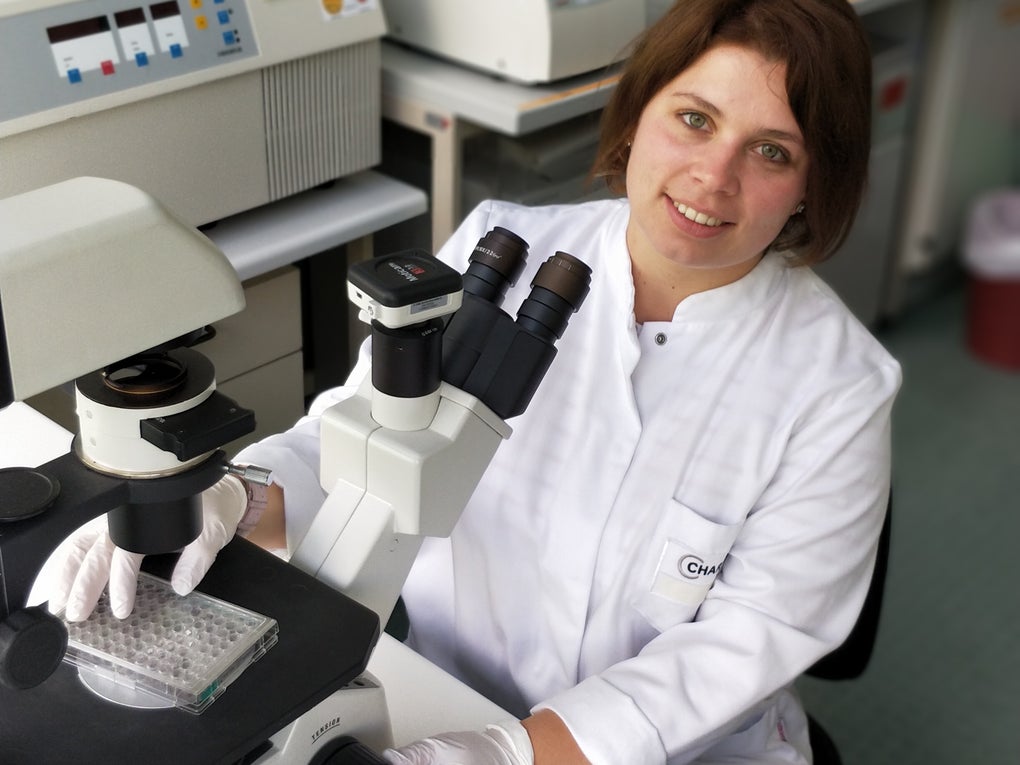
Scientific news from 2019 John Hansen Research Grant awardee Dr. Katarina Riesner
GvHD is the most common complication after a blood stem cell transplant, affecting 30-60% of patients. The donor cells (graft) attack not only the leukemic cells (the so-called graft-versus-leukemia effect), but also healthy tissue in the patient. Although minor graft-versus-host reactions are an indicator of the graft-versus-leukemia effect, severe stages of the disease not responding to appropriate treatment can lead to death. That's reason enough for Dr. Riesner to look for ways to reduce the risk of overly severe and life-threatening reactions.
The endothelium is a major contributor to GvHD
In the process, she tries out a new way of looking at the disease. "Classically, GvHD has always been a disease located in the epithelium: primarily in the colon, skin and liver. A few years ago, our and further scientific publications showed that very early events actually take place in the endothelium, our vascular cells. That's why we work in a first step with endothelial cell lines that have been immortalized," says Dr. Riesner.
Genes of the pentose-phosphate pathway are involved
Her working hypothesis is based on initial hybridization experiments using a gene array. Gene arrays are slides or membranes that carry nucleic acid sequences of specific candidate genes. These sequences can hybridize with matching fragments of the labeled sample cDNA. The amount of signal at a given position is representative for the expression levels of that gene. The array results showed that specific genes of a prominent metabolic pathway, the pentose-phosphate pathway, are involved in the GvHD reactions of endothelial cells. Dr. Riesner explains, "To mimic GVHD in an in-vitro system, we use allo-activated cultured T cells to induce a rejection reaction against our endothelial cells. The targeted cells begin to change their endothelial behavior likely to what we see in GvHD. Once these specific metabolic genes are knocked out using CRISPR Cas, a normalization of this behavior takes place - a promising and interesting observation.”
Highly specific chemical agents act as inhibitors of gene expression
Her lab at Charité Berlin no longer only uses CRISPR knock-outs to inhibit the expression of the responsible genes, but in a next step, chemical agents. In proliferation and migration assays, she and her team found that the expected endothelial-related GvHD events were significantly lower in the treated cells than in the untreated ones. "These results make me very hopeful. Potentially, these chemical agents could be used as drugs to treat GvHD in the future," she says enthusiastically.
The pandemic made work in a molecular biology lab almost impossible
She goes on, "But there is still a long way to go before that happens! Especially the pandemic took a big toll on us – as for so many others. At some point, we were not even able to get our hands on pipette tips anymore. This is a nightmare for a molecular biology lab! Fortunately, at the moment, things are almost back to where they used to be.”
We wish Dr. Riesner and her team all the best for the upcoming experiments and for achieving their goal of contributing to develop new effective drugs against GvHD - despite the impact of the pandemic.
The application period for the John Hansen Research Grant 2022 is currently open, and interested applicants can submit their application until December 3, 2021. For more information, please visit https://professional.dkms.org/research-grant or email grant@dkms.org at any time.